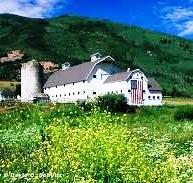Most homeowners want to be eco-friendly, yet they worry that making changes in that regard might be costly and time consuming. Incorporating energy-efficient lighting is a great way to make a big impression with green-conscious homebuyers. In fact, studies have reported that 80% of homebuyers identify energy savings and comfortable surroundings as key factors when deciding between listings.
It isn’t just limited to fluorescent tubes or CFLs (compact fluorescent lamps). LEDs are an energy-efficient light source that began growing in popularity around 2007. LED lighting can be used as accents to better showcase the home’s features. From track lighting over the fireplace to under-counter cabinet lighting and recessed lighting in the hall, LED fixtures can cast dramatic light on your home’s best features, while at the same time, remaining cool to the touch and easy on the wallet.
Here are some interesting facts about LED lighting:
- Offers the same bright white output as incandescent lighting
- Uses 75% less electricity than standard incandescent bulbs
- Uses 75% less electricity than standard incandescent bulbs
- The Department of Energy estimates that replacing regular light bulbs with LEDs could potentially save 190 terawatt-hours annually—the equivalent of lighting over 95 million homes






